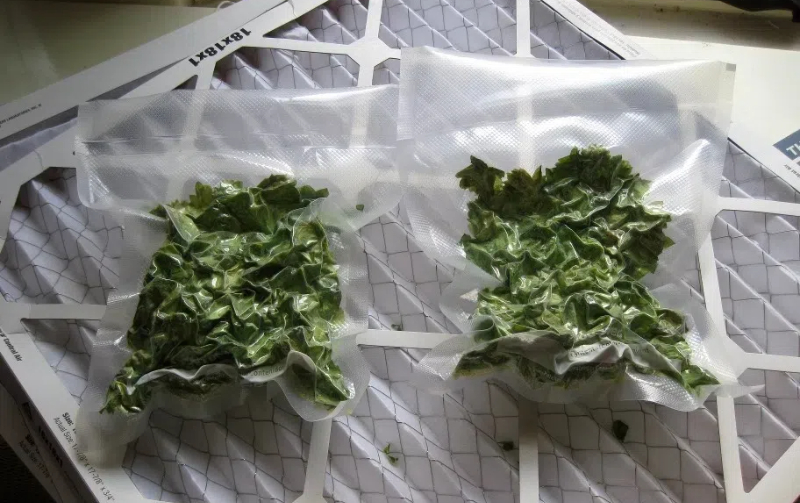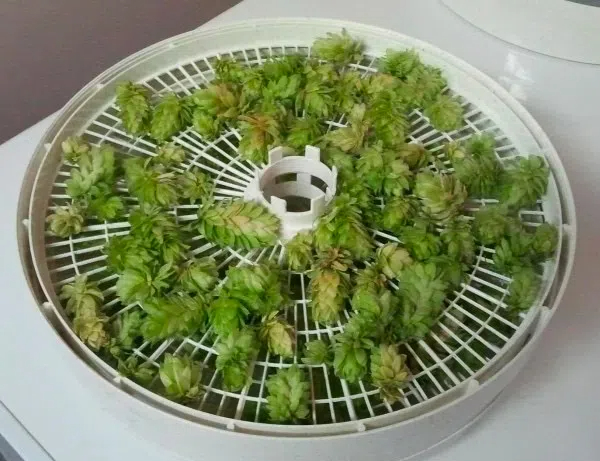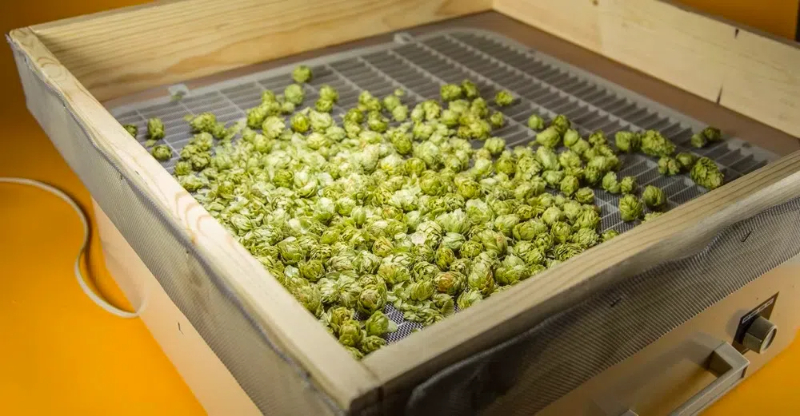
Content Menu
● Understanding Hops
>> The Importance of Drying Hops
● How Long to Dry Hops in a Food Dehydrator?
>> Recommended Drying Times
● Preparing Hops for Dehydration
● Setting Up Your Food Dehydrator
>> Step-by-Step Guide to Drying Hops in a Food Dehydrator
>> Factors Affecting Drying Time
>> Tips for Efficient Drying
● Storing Dried Hops
● Common Mistakes When Drying Hops
● Conclusion
● FAQ
>> 1. What is the best temperature for drying hops in a food dehydrator?
>> 2. How can I tell when my hops are fully dried?
>> 3. Can I dry other herbs using a food dehydrator?
>> 4. How should I store my dried hops after dehydration?
>> 5. Is it necessary to wash fresh hops before drying?
● Citations:
Drying hops is a crucial step in the brewing process, as it preserves the flavor and aroma of the hops, which are essential for creating high-quality beer. Using a food dehydrator is one of the most effective methods for drying hops, allowing for precise temperature control and adequate airflow. In this comprehensive guide, we will delve into the process of drying hops in a food dehydrator, discussing the time required, optimal settings, preparation steps, and tips for achieving the best results.

Understanding Hops
Hops are the flowers of the hop plant, *Humulus lupulus*, and they play a vital role in brewing beer. They provide bitterness to balance the sweetness of malt, as well as contributing unique flavors and aromas. Fresh hops contain a high moisture content, which can lead to spoilage if not dried properly.
The Importance of Drying Hops
- Preservation: Proper drying prevents mold and spoilage.
- Flavor Concentration: The drying process concentrates flavors and aromas.
- Storage: Dried hops can be stored for extended periods without losing quality.
How Long to Dry Hops in a Food Dehydrator?
The drying time for hops in a food dehydrator can vary based on several factors:
- Moisture Content: Freshly harvested hops have a higher moisture content than dried ones.
- Temperature Settings: The temperature at which you dehydrate hops can affect drying time.
- Airflow: Good airflow helps reduce drying time.
Recommended Drying Times
Typically, it takes about 6 to 12 hours to dry hops in a food dehydrator. Here's a breakdown based on temperature settings:
- Low Temperature (95°F - 115°F): 10 to 12 hours
- Medium Temperature (115°F - 125°F): 6 to 8 hours
- High Temperature (125°F - 135°F): 4 to 6 hours
These times can vary depending on the specific dehydrator model and the amount of hops being dried. It is essential to monitor the drying process closely to avoid over-drying or under-drying.
Preparing Hops for Dehydration
Before placing hops in a dehydrator, it's essential to prepare them properly:
1. Harvesting: Pick fresh hop cones when they are fully developed but not overripe. The cones should feel slightly sticky due to the presence of lupulin.
2. Cleaning: Gently wash the hops to remove dirt or insects. Avoid soaking them as this may increase moisture content.
3. Trimming: Remove any excess stems or leaves that may not dry well.

Setting Up Your Food Dehydrator
To achieve optimal results when drying hops, follow these steps:
1. Preheat the Dehydrator: Set your dehydrator to the desired temperature (typically around 120°F).
2. Arrange Hops: Spread the hop cones evenly on the dehydrator trays without overcrowding. This ensures proper air circulation.
3. Monitor Progress: Check the hops periodically for dryness.
Step-by-Step Guide to Drying Hops in a Food Dehydrator
1. Harvest the Hops: Wait until they are fully matured, with a papery feel and yellowish hue.
2. Prepare the Hops: Remove cones from the bine and separate them from stems and leaves.
3. Preheat the Food Dehydrator: Set it to low temperature (around 120°F).
4. Arrange Hops: Spread them out in a single layer on trays.
5. Start Drying Process: Place trays inside and close the door.
6. Monitor and Rotate Trays: Check every few hours; rotate trays for even drying.
7. Test for Dryness: Squeeze a sample; if it feels papery and breaks apart easily, it's ready.
Factors Affecting Drying Time
Several factors can influence how long it takes to dry hops:
- Humidity Levels: Higher humidity slows down drying.
- Hop Variety: Different varieties have varying moisture levels affecting drying time.
- Initial Moisture Content: Wetter hops take longer to dry.
- Dehydrator Settings: Adjust temperature and airflow according to your model's capabilities.
- Batch Size: Larger batches may require more time due to increased moisture content.
Tips for Efficient Drying
- Use multiple trays if possible to maximize capacity.
- Rotate trays halfway through for uniform results.
- Check regularly for doneness; remove as soon as they reach desired dryness.
Storing Dried Hops
Once your hops are fully dried, proper storage is crucial:
- Cool Down: Allow dried hops to cool before packaging.
- Airtight Containers: Store in airtight containers or vacuum-sealed bags to prevent moisture absorption.
- Dark Place: Keep stored hops in a dark, cool place to maintain flavor integrity.
Common Mistakes When Drying Hops
1. Over-Drying: Leads to loss of aromatic oils; check regularly.
2. Under-Drying: Can cause spoilage; ensure they are adequately dried before storage.
3. Improper Airflow: Inadequate airflow can lead to mold; ensure good circulation during drying.
4. Ignoring Humidity Levels: High humidity can slow down drying; adjust expectations accordingly based on local conditions.
5. Not Monitoring Closely: Regular checks help prevent both over-drying and under-drying issues.
Conclusion
Drying hops in a food dehydrator is an effective way to preserve their quality for brewing purposes. By understanding the drying times and methods involved, you can ensure that your hops retain their essential flavors and aromas for future use. With proper preparation and storage techniques, you can enjoy fresh hop flavor in your brews year-round while minimizing waste and maximizing quality.

FAQ
1. What is the best temperature for drying hops in a food dehydrator?
The ideal temperature range for drying hops is between 95°F and 135°F. Lower temperatures preserve more aroma compounds but take longer to dry.
2. How can I tell when my hops are fully dried?
Hops are fully dried when they feel dry and crumbly but not brittle. They should also have a strong aroma indicative of their freshness before drying.
3. Can I dry other herbs using a food dehydrator?
Yes! A food dehydrator is versatile and can be used to dry various herbs like basil, oregano, and thyme alongside hops without any issues.
4. How should I store my dried hops after dehydration?
Store dried hops in airtight containers or vacuum-sealed bags placed in a dark, cool location to maintain their quality and flavor over time.
5. Is it necessary to wash fresh hops before drying?
While washing fresh hops helps remove dirt and insects that may be present on them, it's important not to soak them as this may increase their moisture content before dehydration.
Citations:
[1] https://www.homebrewersassociation.org/how-to-brew/how-to-harvest-prepare-and-store-homegrown-hops/
[2] https://www.aimheatpump.com/a-news-how-long-to-dry-hops-in-food-dehydrator
[3] https://www.oculyze.net/how-to-dry-hops-in-a-dehydrator/
[4] https://www.healthycanning.com/drying-hops
[5] https://www.themadfermentationist.com/2011/07/drying-hops-at-home.html
[6] https://www.brewersfriend.com/2013/09/06/drying-hops-using-a-food-dehydrator-great-results/
[7] https://homebrew.stackexchange.com/questions/23245/beer-brewing-how-do-i-dry-fresh-hops
[8] https://www.youtube.com/watch?v=oLTNKzkP6Og
[9] https://www.uaex.uada.edu/publications/pdf/FSA6157.pdf
[10] https://www.reddit.com/r/TheHopyard/comments/1dia7e8/drying_hops_in_food_dehydrator/
[11] https://beerandbrewing.com/diy-hops-dryer/











